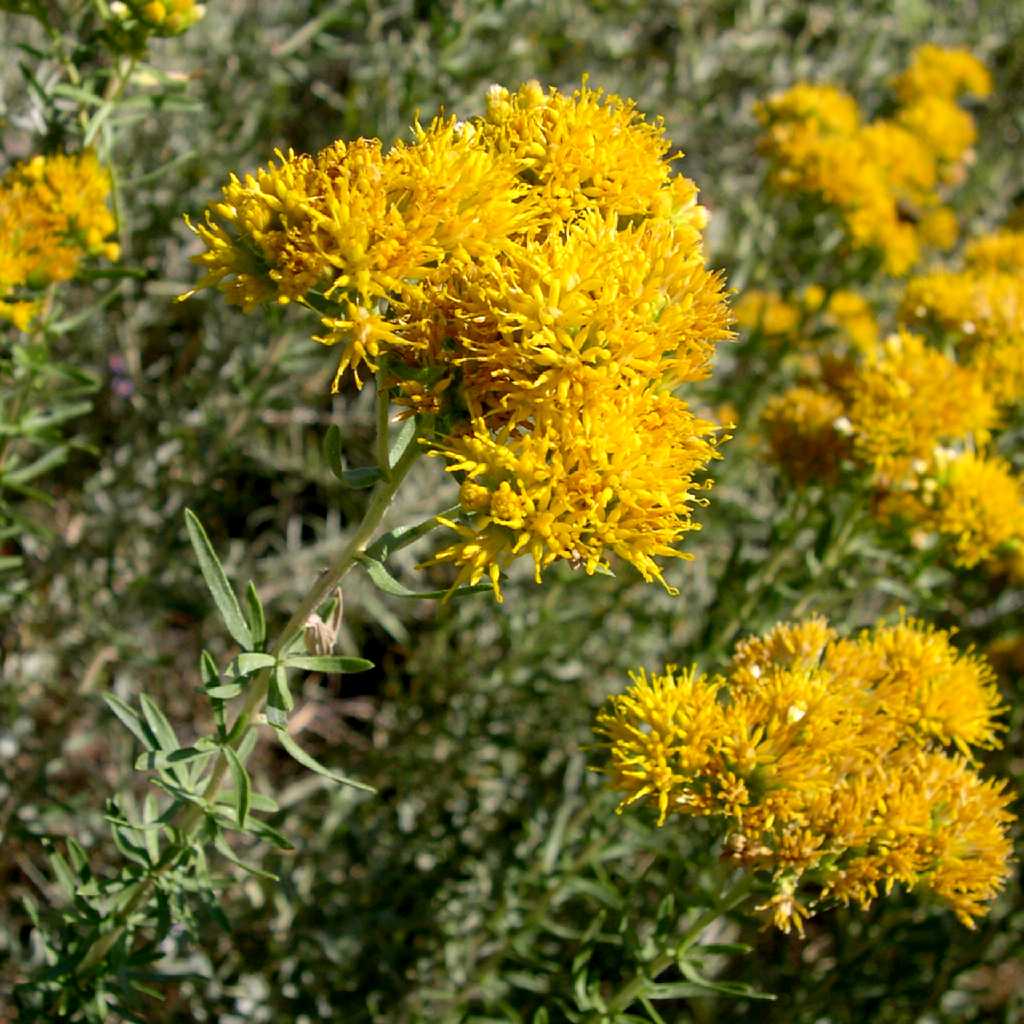Isocoma
|
Family: Asteraceae |
Perennials or subshrubs, (4-)20-120(-150) cm (bases often woody). Stems usually strictly erect, few-branched, glabrous or hispidulous, villous, or tomentose, usually gland-dotted (sessile or slightly sunken in pits), sometimes stipitate-glandular, rarely eglandular, often resinous. Leaves mostly cauline; alternate; sessile; blades 1-nerved, linear to oblanceolate or obovate, margins entire or toothed to pinnatifid (teeth or lobes often spinulose-tipped), faces glabrous or hispidulous, villous, or tomentose, usually gland-dotted (in pits). Heads discoid, (sessile or subsessile) in compact clusters borne in terminal corymbiform arrays, rarely borne singly. Involucres obconic to turbinate or campanulate, (3-9.5 ×) 2-8 mm. Phyllaries 15-30 in (3-)4-6 series, 1-nerved (midnerves usually barely evident; flat to convex), oblong- to elliptic-lanceolate, unequal, margins narrowly scarious, apices sometimes green, faces glabrous or tomentose, sometimes gland-dotted, sometimes with resin pockets. Receptacles flat, pitted, epaleate. Disc florets 8-34, bisexual, fertile; corollas yellow with dark orange-resinous veins, tubes (with at least a few glandular hairs) longer than abruptly ampliate, goblet-shaped throats (tube elevating corollas above involucres at flowering), lobes 5, erect, deltate (elongating at maturity, unequal, outer prominently bent or leaning outward, abruptly enlarged); style-branch appendages narrowly triangular. Cypselae (brownish) obpyramidal, terete or subterete, 5-11-ribbed (sometimes thick and resinous), faces sericeous; pappi persistent, of 40-50 unevenly thick, unequal, barbellate, apically attenuate bristles in 2(-3) series. x = 6. Isocoma is recognized by its subshrubby habit, gland-dotted (sometimes stipitate-glandular), often resinous leaves, compactly clustered discoid heads in terminal, corymbiform arrays, goblet-shaped disc corollas, and base chromosome number of x = 6. H. M. Hall (1928) regarded the group as a section of Haplopappus, as did A. Cronquist (1994). Naturally occurring hybrids in south-central Mexico have been observed between Isocoma veneta (Kunth) Greene and Xanthocephalum humile (Kunth) Bentham (R. L. Hartman and M. A. Lane 1991).
|

